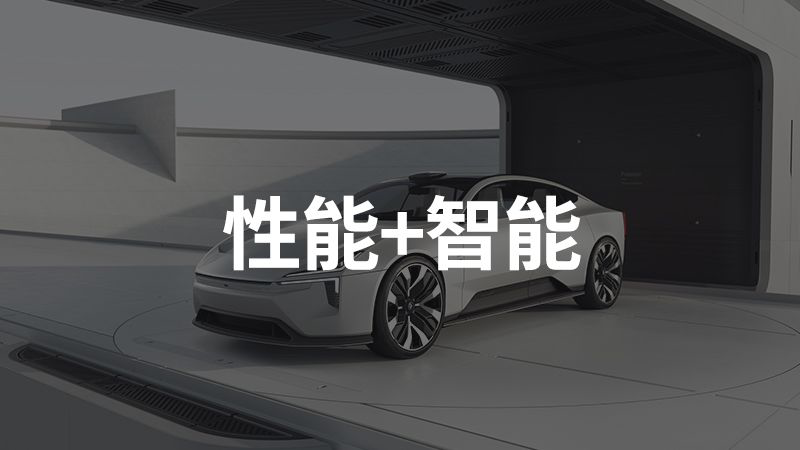*All images in this article are from Polestar official website.
On February 25th, Polestar officially launched a new model – Polestar Precept, positioning itself as a pure electric 4-door GT sedan.
To summarize the new model, I would use “3-2-1”. Three: Precept is Polestar’s third model; Two: Polestar’s second pure electric vehicle. One: the first Polestar model to adopt a brand new design language.
As I mentioned earlier, Polestar Precept is the first Polestar model to adopt a brand new design language. What changes and innovations does it have on the product side, I believe this is what everyone is concerned about.
About Product
As it is a brand new design language, let us first look at the exterior of the Precept.
Compared with Polestar 1 and 2, one of the most significant changes on the front face is the disappearance of the air intake grille. It has been replaced by an intelligent panel – SmartZone, which integrates two radar sensors and a high-definition camera, preparing for the upgrade of active safety technology and automatic driving assistance technology. In addition, there is also a lidar integrated above the glass roof, which will provide support for future automatic driving assistance systems.
Another significant change on the front face is that the iconic “Thor’s Hammer” LED headlights have adopted a split-style design. The overall feeling that it gives me is that it renders a sense of technology while still retaining some elements of Volvo. Compared with the previous design, which one do you prefer?
Additionally, as you may have noticed, there is a deflector designed on the hood above the intelligent panel – SmartZone, which is used to reduce air resistance. This type of design is relatively rare in the current market. However, whether this design can be retained after volume production is still a question.
Moving on to the side of the vehicle, Polestar Precept adopts camera modules to replace traditional side mirrors, which also aims to reduce air resistance. Due to regulatory reasons, this feature is unlikely to be achieved after volume production, which is a purely promotional feature. The wheelbase is 3100mm, which is the largest among all Polestar models currently.## English Markdown Text
At the rear, the Precept continues the Polestar 2’s through-style taillight design but with a more minimalistic style. Moreover, it features a non-traditional rear window design where the glass roof extends directly to behind the back seats. The liftback style of the trunk also provides a larger opening angle and height to improve the ease of loading, and the design of the lower bumper further indicates its identity as a performance car.
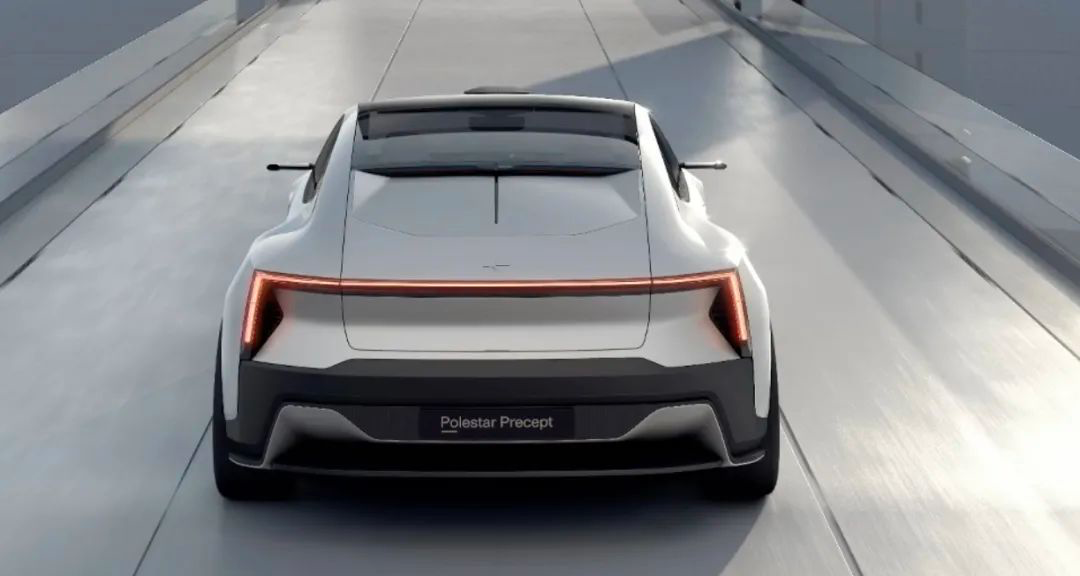
Regarding the interior, the center console is equipped with a 15-inch touch screen, larger than both the Polestar 1 and 2. It is also paired with a 12.5-inch full LCD instrument panel. Additionally, the Precept features a crystal piece in the center of the rear roof, which can project a holographic Polestar logo. It can be said that Polestar put a lot of effort into technology to enhance the overall futuristic feel of the Precept.
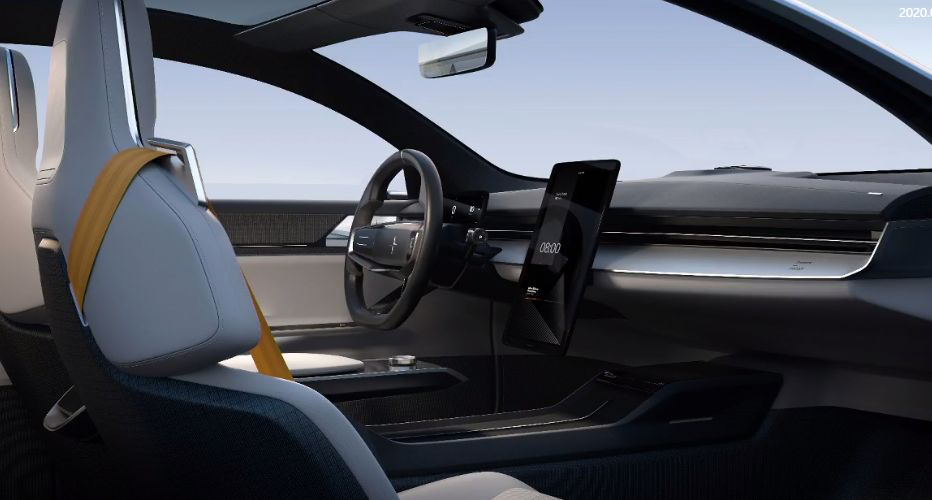
In terms of the infotainment system, Polestar continues to collaborate with Google, to develop the next-generation human-machine interaction system based on the native Android Automotive OS. Also, to support more personalized functions and intelligent interaction applications, the voice recognition system will be more intelligent, supporting multiple language and accent recognition to enable natural man-machine conversation.
In the Polestar 2, its voice assistant is supported by iFLYTEK, which can perform voice-activated destination search, map navigation, air conditioning adjustment, and media playback. The iFLYTEK’s natural voice recognition ability is remarkable and can support autonomous learning which can differentiate Mandarin accents from different regions, so I am curious how it will evolve in the Precept.
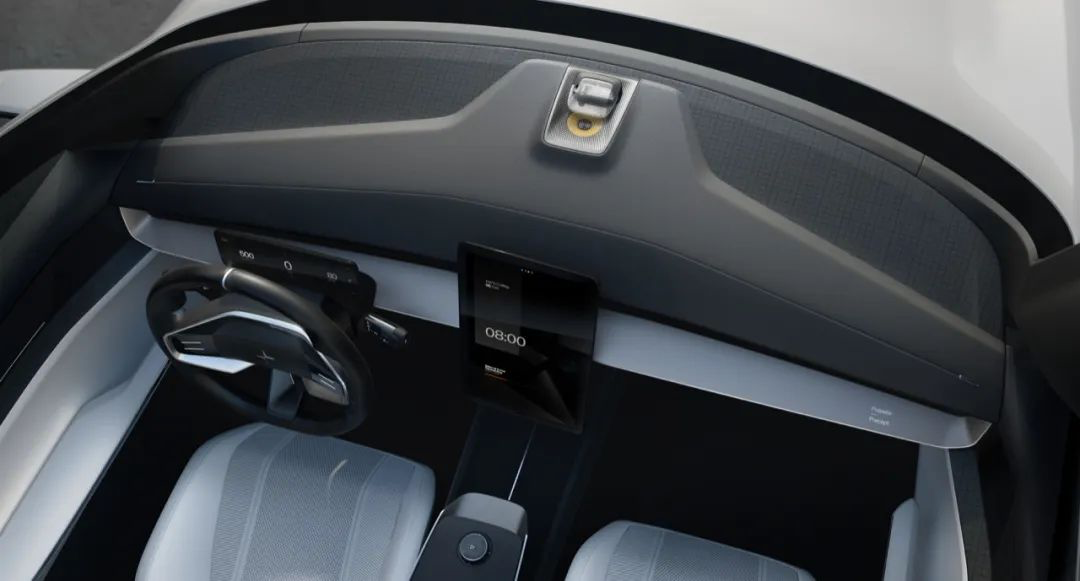
On the central control panel, the Precept also integrates a large number of intelligent sensors, adopting single-line tracking technology and close-range sensors to perceive users’ behavior in real-time. Therefore, the screen brightness and displayed content will automatically adjust based on the user’s attention. When the user looks at the screen, the low-brightness display will automatically increase its brightness. However, when the driver looks at the screen for a long time and ignores the road ahead, the system will issue a warning as a safety aid.## Introduction
The Polestar Precept can automatically complete vehicle pre-settings based on the user’s personal preferences and last driving behavior. When the user approaches the vehicle, the car automatically recognizes the user through the Polestar Digital Key function and completes the setting based on the user’s preferences and recent driving behavior.
One of the biggest highlights of the Polestar Precept’s interior is its high-tech and environmentally friendly materials and advanced manufacturing processes. Bcomp’s natural flax fiber composite material is applied to the interior panels and seat backs, reducing the weight of traditional interior parts by up to 50% and reducing plastic usage by 80%.
The Polestar Precept’s 3D Knit car seats are made of fiber sourced from recyclable PET plastic bottles, with linings and headrests made from recyclable cork fiber, and carpets made from recyclable fishing nets. In Volvo’s words, this is the infusion of environmentally friendly elements into aesthetic design.
About the Brand
Let’s take a brief look at the Polestar brand after introducing the product.
Polestar was officially named Polestar in 2005. Its predecessor, Flash Engineering, was a Swedish car team and a car modification company. After the team was established, Flash Engineering continued to participate in racing with modified Volvo-based models.
Later, due to some reasons, Flash Engineering changed hands, and the name Polestar officially entered the public’s view. In 2005, the team was renamed Polestar Racing Team. One of the reasons for using the name Polestar is that it represents Sweden, located in the north of the earth. From then on, the Polestar Racing Team began to grow.
After the establishment of the Polestar company, it officially became the performance car supplier of the Volvo brand. The story between Polestar and Volvo began here.
In 2015, Volvo Cars officially acquired the Polestar brand and Polestar Performance, which was responsible for performance car R&D, and a new brand pattern began to be delineated.In October 2017, Volvo officially announced the independence of Polestar from the Volvo brand, and it became a subsidiary. The first car under the Polestar brand, Polestar 1, was also launched at a press conference held in Shanghai by Volvo. Polestar 1 is positioned as a high-performance plug-in hybrid two-door coupe, featuring a brand new emblem design.
In April 2019, Polestar announced its Chinese brand name, Polestar.
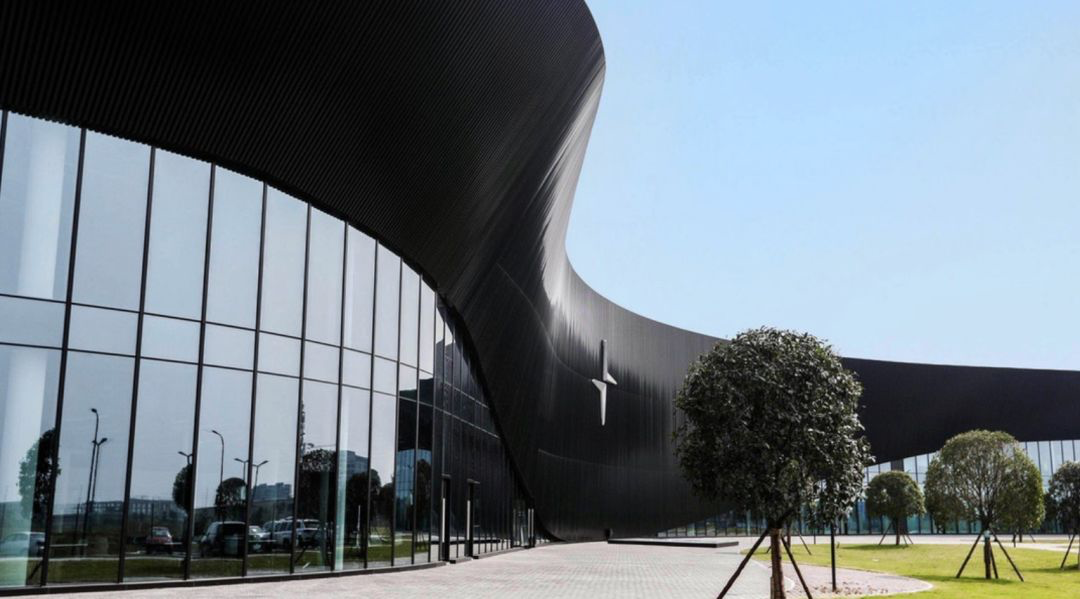
On April 12, 2019, Polestar officially released its first pure electric high-performance model, Polestar 2. In the words of Polestar, the release of Polestar 2 aims to fully compete with Tesla Model 3 in the luxury midsize car market.
In the future, Polestar 3 will also be added to the Polestar product line as a pure electric SUV model, bringing more pure electric vehicle models focused on driving pleasure to users.
In conclusion
From the unveiling of the Polestar Precept, it is easy to see that its positioning is a pure electric GT car with both performance and intelligence.
As mentioned before, intelligence is the long-term development direction, and Polestar has also realized this. By investing in intelligence, the SmartZone and the lidar above the glass roof are signals that Polestar will not be satisfied with the current L2 level of assisted driving.
In addition, using recyclable materials for the interior of Precept, as a traditional luxury brand, is a bold and radical idea. Of course, this is a trend for the future, but it is also where Polestar differs from some other brands.
According to internal sources from 42 Garage, there is currently no clear plan for Precept’s production. The final results will depend on the production version of the car.
This article is a translation by ChatGPT of a Chinese report from 42HOW. If you have any questions about it, please email bd@42how.com.
